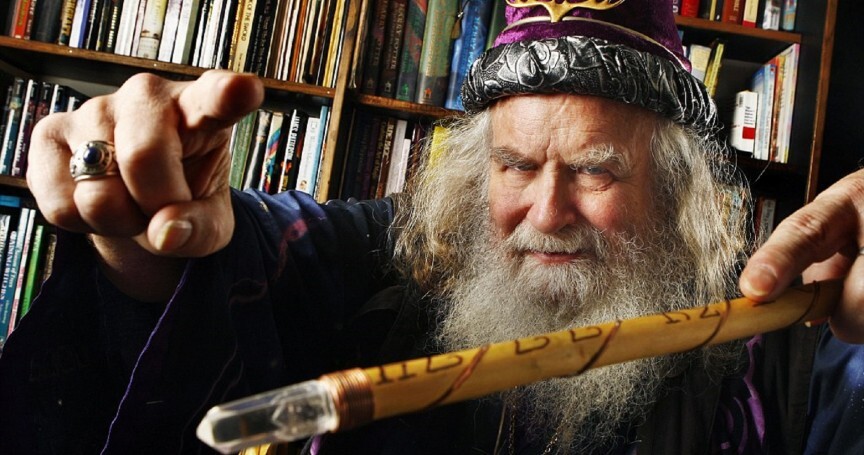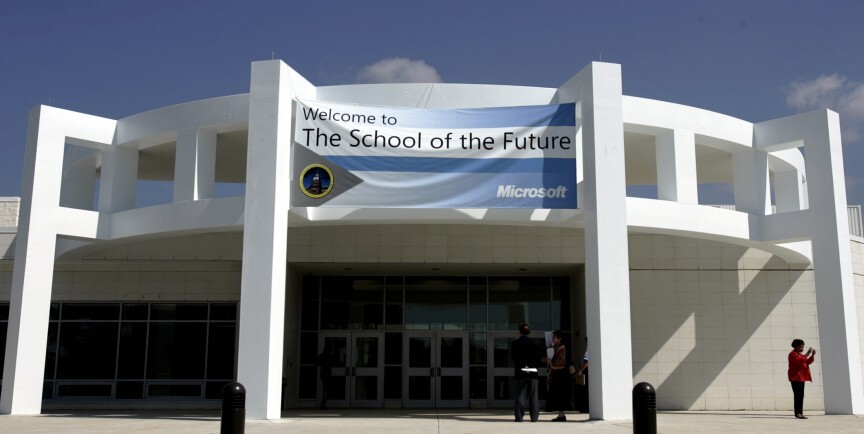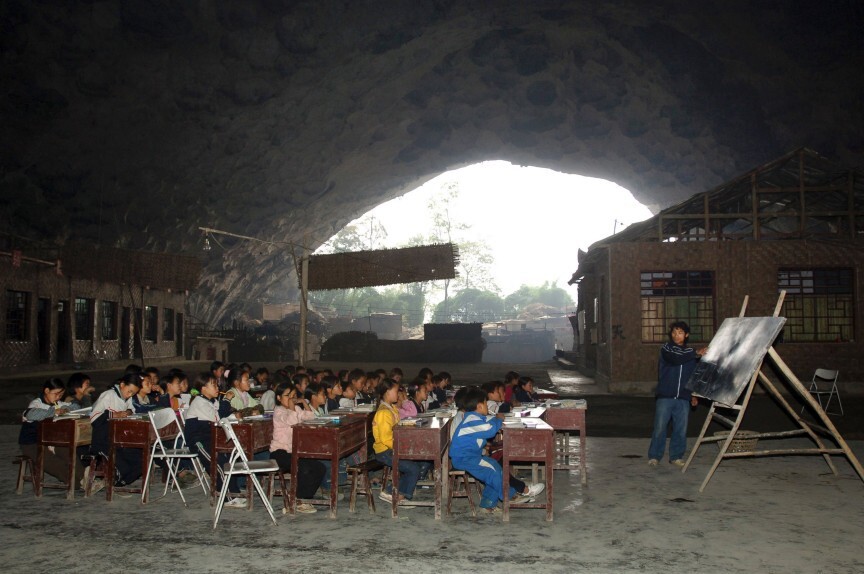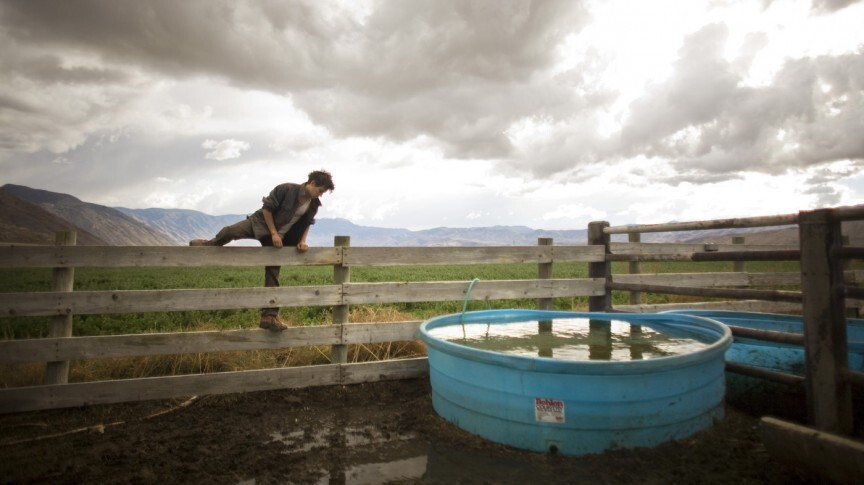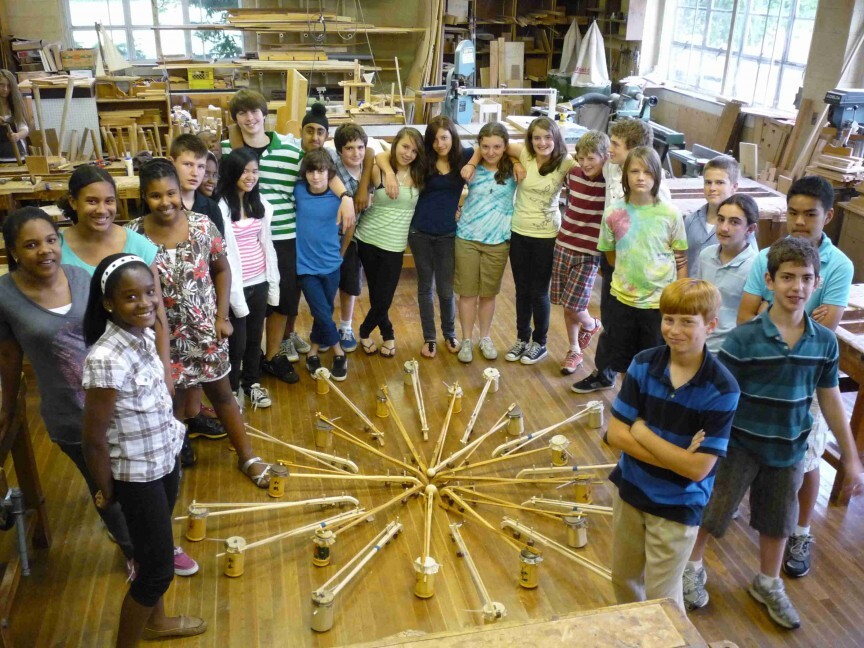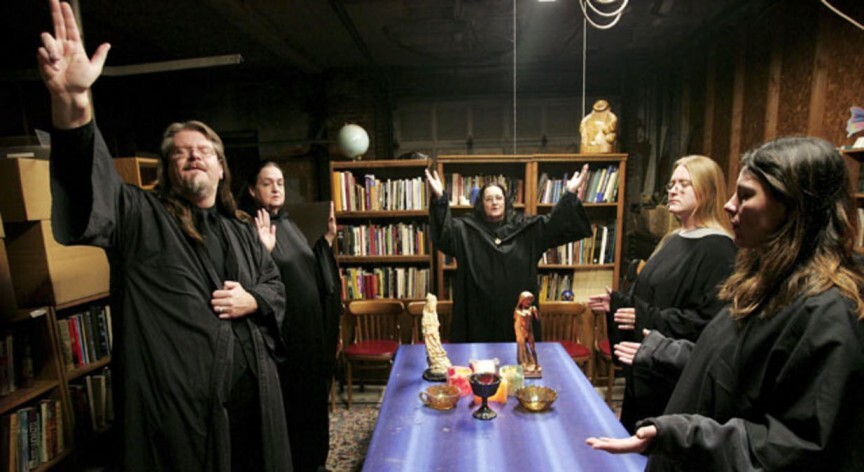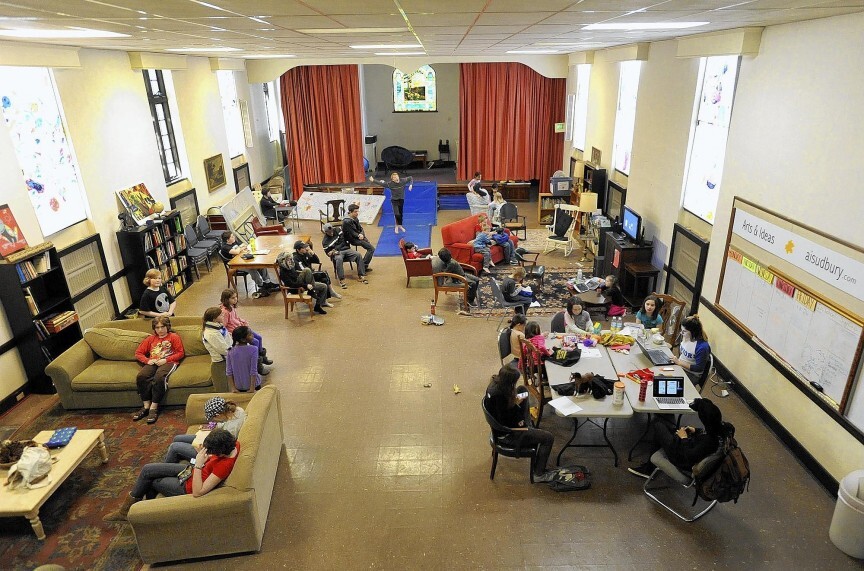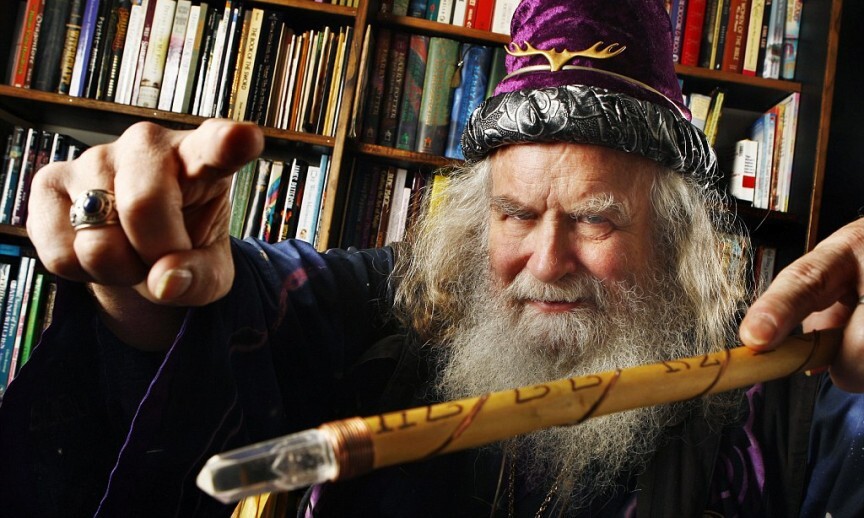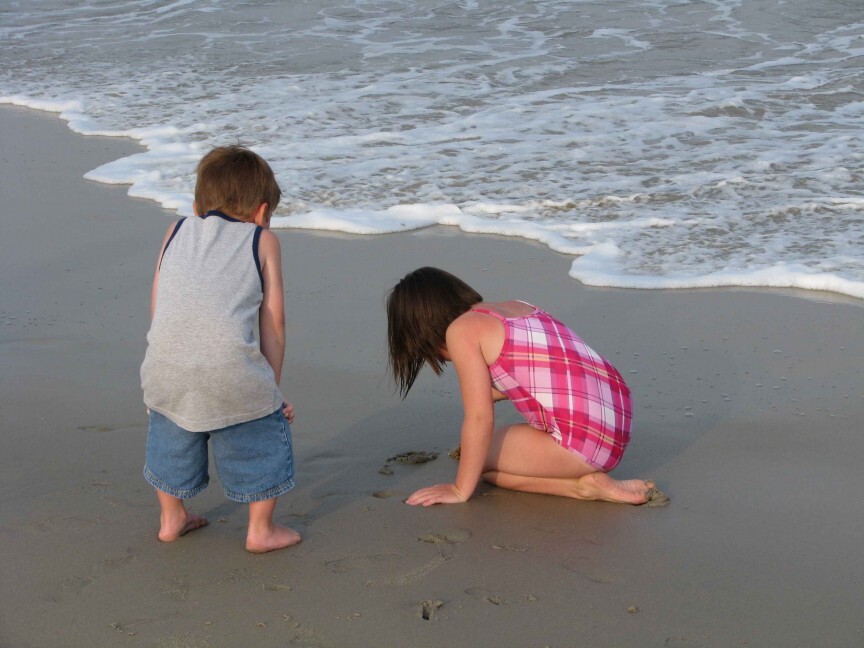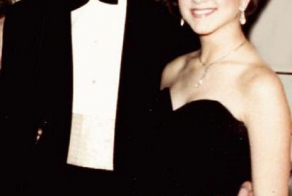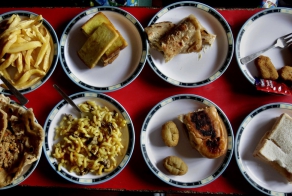0
10
When schools resumed about a month ago, not all students went back to a ‘regular’ school building with hallways lined with lockers. The Train Platform School in India, was set up by Inderjit Khurana in 1985, and it’s exactly like it sounds. Students without access to regular classrooms, gather at train stations where they are taught how to read and write. Since its inception, more than 4,000 ‘street’ kids have been educated via the program. With any preconceived notion of what schooling should be shaken up, here are 9 more schools that eschew traditional teaching methods and courses for… well, their way.
9. Microsoft’s School of the Future, Philadelphia
When Microsoft announced a partnership with the West Philly School District in 2003, it seemed like an odd pairing. The parrtnership involved designing, developing and launching a new type of school; one that ‘prepared students for a changing world.’
When West Philadelphia’s School of the Future was opened in 2006, they did things a bit differently. Every student was expected to have a laptop; math lessons were learned using Microsoft’s OneNote and lockers were accessed using a ‘chipped’ ID card.
Despite the hi-tech environment, cracks started showing up. Making the leap from a traditional curriculum to a 100% digital learning one proved difficult for many students. The teachers struggled with the amount of technology they had to use in their lessons. All these led to mistakes which culminated in the school plummeting in the district’s educational assessment standards.
All that is water under the bridge now, as the unconventional SOF has become a roaring success. Students are scoring better grades and the school has become the second most requested school in the city.
When West Philadelphia’s School of the Future was opened in 2006, they did things a bit differently. Every student was expected to have a laptop; math lessons were learned using Microsoft’s OneNote and lockers were accessed using a ‘chipped’ ID card.
Despite the hi-tech environment, cracks started showing up. Making the leap from a traditional curriculum to a 100% digital learning one proved difficult for many students. The teachers struggled with the amount of technology they had to use in their lessons. All these led to mistakes which culminated in the school plummeting in the district’s educational assessment standards.
All that is water under the bridge now, as the unconventional SOF has become a roaring success. Students are scoring better grades and the school has become the second most requested school in the city.
8. Dongzhong Mid-Cave Primary School
In a region suffering from acute water and food shortage due to to desertification, most families would focus on getting by than worry about education. But in one of the worst hit provinces of Southwestern China, Guizhou, the community prioritized education, despite having little government support.
With no space for school buildings, they turned to the one thing they have in abundance; caves. In 1984, the villagers opened an elementary school in a cave carved into the side of a mountain. Named Dongzhong Mid-Cave Primary, the school catered to over 180 kids. Teachers praised the ‘unique learning environment’ as it bestowed certain benefits. They claim there were better acoustics during singing lessons and a wide variety of fauna for studying biology. They even had a make-shift basketball court to play in during recess.
Unfortunately, the Mid-Cave school was closed by the Chinese government in 2011, stating “China is not a society of cavemen.” We hope they realize that having the cave school was infinitely better than having no school in the region.
With no space for school buildings, they turned to the one thing they have in abundance; caves. In 1984, the villagers opened an elementary school in a cave carved into the side of a mountain. Named Dongzhong Mid-Cave Primary, the school catered to over 180 kids. Teachers praised the ‘unique learning environment’ as it bestowed certain benefits. They claim there were better acoustics during singing lessons and a wide variety of fauna for studying biology. They even had a make-shift basketball court to play in during recess.
Unfortunately, the Mid-Cave school was closed by the Chinese government in 2011, stating “China is not a society of cavemen.” We hope they realize that having the cave school was infinitely better than having no school in the region.
7. Trabajo Ya, Spain
With up to 400,000 prostitutes in Spain (it’s legal), getting ahead in business may require sex workers to stand out a little more. In 2012, a school called Trabajo Ya opened its doors in Valencia, to teach prostitutes how to be better business people. For $120, the school offered a basic course in “Professional Prostitution with Maximum Discretion.”
The week-long course consists of theory classes covering the history and evolution of the worlds oldest profession. The practical aspect isn’t left out, as students practice with sex toys for two hours everyday, while learning from the Kama Sutra. The school was hit with lawsuits from citizens who objected to the courses offered, but the courts ruled in favor of the school. This victory set a precedent for others; in 2014, the Sex Professionals Association in Spain (Aprosex), also opened a school offering professional training in prostitution.
The week-long course consists of theory classes covering the history and evolution of the worlds oldest profession. The practical aspect isn’t left out, as students practice with sex toys for two hours everyday, while learning from the Kama Sutra. The school was hit with lawsuits from citizens who objected to the courses offered, but the courts ruled in favor of the school. This victory set a precedent for others; in 2014, the Sex Professionals Association in Spain (Aprosex), also opened a school offering professional training in prostitution.
6. Deep Springs College, California
No college experience is complete without frat boy hi-jinks, beer pong, loud music, you know, the whole works. Well, forget all that if you plan on attending Deep Springs. Located in the middle of the California desert, it is described as ‘an elite college as exclusive as Harvard and as remote as the North Pole.’
This college ranch was developed by an entrepreneur, L.L. Nunn in 1917. He was looking for a place where workers could be educated and educated people could do work. Nunn’s vision is reflected in the strict rules and regulations of the school. Deep Springs has strict rules regarding conduct and even admission.
Until 2012, the school only accepted applications from male candidates. Of the 200+ applications received, only 12 were admitted each year. Alongside their academics, students are expected to put in 20 hours of manual labor weekly managing an alfalfa farm and cattle ranch. To teach self-governance, the school is mostly run by the students themselves. During term time, students were banned from leaving the valley, taking any drugs and drinking alcohol.
Some may see the extreme nature of the school as almost cult-ish, but it seems the removal of distraction actually works. A large number of their students go on as juniors to Harvard, Brown, Columbia and Yale, causing Deep Springs College to have one of the highest yield rates in the USA.
This college ranch was developed by an entrepreneur, L.L. Nunn in 1917. He was looking for a place where workers could be educated and educated people could do work. Nunn’s vision is reflected in the strict rules and regulations of the school. Deep Springs has strict rules regarding conduct and even admission.
Until 2012, the school only accepted applications from male candidates. Of the 200+ applications received, only 12 were admitted each year. Alongside their academics, students are expected to put in 20 hours of manual labor weekly managing an alfalfa farm and cattle ranch. To teach self-governance, the school is mostly run by the students themselves. During term time, students were banned from leaving the valley, taking any drugs and drinking alcohol.
Some may see the extreme nature of the school as almost cult-ish, but it seems the removal of distraction actually works. A large number of their students go on as juniors to Harvard, Brown, Columbia and Yale, causing Deep Springs College to have one of the highest yield rates in the USA.
5. Waldorf Schools (Worldwide)
To some parents, mainstream education is ‘cold and unfeeling’, and treats kids like mere statistics. Cue the Waldorf movement which advocates that all children must be treated as individuals. Developed in 1912 by Rudolph Steiner, the movement believes that children have three periods of development, and should be taught in different ways at each stage.
Steiner further classified children based on temperament, physical characteristics and race. But with no proof to back his claims, many have questioned the efficacy of the Waldorf method. Waldorf schools are also notoriously anti-technology, banning anything that requires batteries to run. Students are made to play with low-tech ‘toys’ like pine cones, wooden blocks and faceless dolls. Contrary to everything a school should be, reading is delayed in Waldorf schools. This is based on the belief that children shouldn’t learn to read until their baby teeth fell out.
Despite these unconventional ideas, the Waldorf Schools claim to be the fastest-growing alternative schools. Parents of former students have accused the school of being a cult, there are even ‘Waldorf survivor groups’ online!
Steiner further classified children based on temperament, physical characteristics and race. But with no proof to back his claims, many have questioned the efficacy of the Waldorf method. Waldorf schools are also notoriously anti-technology, banning anything that requires batteries to run. Students are made to play with low-tech ‘toys’ like pine cones, wooden blocks and faceless dolls. Contrary to everything a school should be, reading is delayed in Waldorf schools. This is based on the belief that children shouldn’t learn to read until their baby teeth fell out.
Despite these unconventional ideas, the Waldorf Schools claim to be the fastest-growing alternative schools. Parents of former students have accused the school of being a cult, there are even ‘Waldorf survivor groups’ online!
4. Salem Witch School, Massachusetts
Catering to aspiring students of witchcraft, the Wiccan school boasts a worldwide student body. No, they don’t beam lectures directly into students heads, but through online classes. The school had a physical presence in Rossville, Chicago where they hosted official events. That was until 2009 when the protests from Rossville’s Christian population became ‘unfavorable’ for their activities. The school moved to Salem, Mass, home of the original persecution of witchcraft, more than three centuries ago.
The school offers courses in Wicca, Divinity, Paganism, Aromatherapy, spell writing etc. With educational portals for the UK, Europe and South Africa, the school has graduated over 240,000 students till date. Before you (totally) disregard this school, completing their Correllian Wicca Clergy Degree Program grants you legal clergy status in the USA and several other countries too.
The school offers courses in Wicca, Divinity, Paganism, Aromatherapy, spell writing etc. With educational portals for the UK, Europe and South Africa, the school has graduated over 240,000 students till date. Before you (totally) disregard this school, completing their Correllian Wicca Clergy Degree Program grants you legal clergy status in the USA and several other countries too.
3. Sudbury Schools (Worldwide)
When the first Sudbury school opened in Framingham, Mass in 1968, the Sudbury movement intended to push the principles of individuality and democracy as far as possible. Unlike Montessori schools where students are offered specific options laid out by a teacher, at Sudbury model schools, all bets are off.
Students are granted total control over what they do, they get to choose what they spend their time doing or even if they get evaluated. At the weekly School Meeting, students and ‘staff members’ (no title of teacher here) have equal say on everything concerning the school. How the budget is allocated, which staff should be hired or fired, punishments to be handed out; almost like Lord of the Flies, but in schools around the world.
The Sudbury approach believes that students are inherently motivated to learn as learning is a by-product of human activity. They also believe in allowing students make their mistakes and learn from them.
These schools are open for the K-12 age bracket, and there are currently 58+ Sudbury schools across the world, from Belgium to Israel.
Students are granted total control over what they do, they get to choose what they spend their time doing or even if they get evaluated. At the weekly School Meeting, students and ‘staff members’ (no title of teacher here) have equal say on everything concerning the school. How the budget is allocated, which staff should be hired or fired, punishments to be handed out; almost like Lord of the Flies, but in schools around the world.
The Sudbury approach believes that students are inherently motivated to learn as learning is a by-product of human activity. They also believe in allowing students make their mistakes and learn from them.
These schools are open for the K-12 age bracket, and there are currently 58+ Sudbury schools across the world, from Belgium to Israel.
2. Grey School Of Wizardry, California
If you ever wanted to attend Hogwarts, but realize you actually live in the real world; there’s still one option available. Based in California, the Grey School of Wizardry might be the next best thing.
Specializing in occult magic, the school is eerily similar to Hogwarts. Students under 18, are sorted into one of four houses: Gnomes, Winds, Undines and Salamanders. Adult students are sorted into one of four Lodges: Society of the Four Winds, Order of the Dancing Flames, Coterie of the Flowing Waters, and Circle of the Standing Stones.
The school was founded and is still run by headmaster Oberon Zell-Ravenheart. Oberon is referred to as a real-life Dumbledore (he goes everywhere in his full wizard costume, complete with wand.) The first wizard school to be officially recognized as an academic establishment, The Grey School describes itself as a secular, rather than religious institution.
Offering 450 classes split across 16 departments, the curriculum includes gems like Alchemy, Beastmastery, Horse-whispering, wand-making and spell casting. The curriculum gets increasingly complex as students progress. With an active online presence and a physical location, The Grey School aims to make the teaching of magic as accessible as possible!
Specializing in occult magic, the school is eerily similar to Hogwarts. Students under 18, are sorted into one of four houses: Gnomes, Winds, Undines and Salamanders. Adult students are sorted into one of four Lodges: Society of the Four Winds, Order of the Dancing Flames, Coterie of the Flowing Waters, and Circle of the Standing Stones.
The school was founded and is still run by headmaster Oberon Zell-Ravenheart. Oberon is referred to as a real-life Dumbledore (he goes everywhere in his full wizard costume, complete with wand.) The first wizard school to be officially recognized as an academic establishment, The Grey School describes itself as a secular, rather than religious institution.
Offering 450 classes split across 16 departments, the curriculum includes gems like Alchemy, Beastmastery, Horse-whispering, wand-making and spell casting. The curriculum gets increasingly complex as students progress. With an active online presence and a physical location, The Grey School aims to make the teaching of magic as accessible as possible!
1. Unschooling (At a Home near You)
If you thought the concept of giving direct democracy to kids was a little mental, at least you have them in a formal classroom environment. The concept of unschooling takes that idea and kicks it out the window. Described by some as ‘relaxed homeschooling,’ unschooling further pushes the boundaries of independence and freedom.
Children are encouraged to play, to think for themselves and learn through their life experiences. They can learn what they want, when they want and through any medium they like. Unlike homeschooling where there is a curriculum prepared by the parents, unschooling gives the child free reign to do what they like.
Allowing a child to choose what they want to do in a non-structured environment or manner can be risky; self-motivation plays a huge part in how much the child does or doesn’t do. If left unchecked, learning even basic skills can be easily overlooked. But unschooling can also lead to the development of hidden talents; the winner of Season 8 of The Voice, Sawyer Fredericks, was unschooled and practiced his singing at farmers’ markets, community events and folk clubs.
Children are encouraged to play, to think for themselves and learn through their life experiences. They can learn what they want, when they want and through any medium they like. Unlike homeschooling where there is a curriculum prepared by the parents, unschooling gives the child free reign to do what they like.
Allowing a child to choose what they want to do in a non-structured environment or manner can be risky; self-motivation plays a huge part in how much the child does or doesn’t do. If left unchecked, learning even basic skills can be easily overlooked. But unschooling can also lead to the development of hidden talents; the winner of Season 8 of The Voice, Sawyer Fredericks, was unschooled and practiced his singing at farmers’ markets, community events and folk clubs.
Source:
Ссылки по теме:
- The 13 Weirdest Things People Do To Keep The Memory Of Their Pets
- 12 Really Weird Laws That Are Just Plain Crazy!
- School Stadiums on the Roofs
- Celebrity Prom Photos
- The 10 Weirdest Ways Artists Create Their Work


